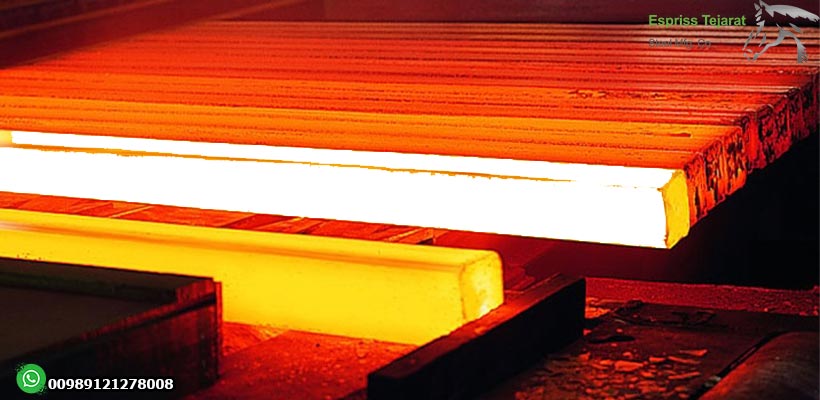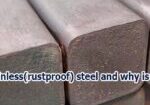What is steel billet ?

Is there any differences between billet and ingot ?In this essay from espriss we will answer these questions so stay with us .Generally billet , bloom and even slab are same but we must keep in mind that these three are different .these products are semi-finished steel products that must be processed to become final products. What is billet ? If the ingot is directly from ccm production to rolling consumption, it is called ccm ingot or billet.Billet is longer than the ingot and has a circular or square cross-section with a width of less than 15 cm.In other words, the cross-sectional area of the billet is less than 230 square centimeters and it is mostly used for the production of rebar and wire The billet is produced in different grades such as sp3 and sp5. A billet which is flexible and also more flexible than bending, stretching and twisting, is sp3 billet. The sp3 billet is not flexible and is used when the structure is not subjected to force and pressure and is almost stable. the sp3 billet is more expensive . Sp5 billet is mostly used for rebar production and sp3 grade is used for making iron beams. The history of billet early in the 1800s, steel billets became popular after the end of British colonialism in the United States and when American entrepreneurs began producing brass and bronze ingots, which later proved to be one of the fastest growing industries in this new industry. With the British took all of the US copper to Britain for further smelting and processing, iron and copper were almost non-existent in the US at the time. Billets have a specific grain structure. This allows the metal to be processed in an inseparable manner. Steel ingots are also known for their high ductility and elasticity, especially when exposed to varying temperatures during molding and forming. The difference between ingot and billet As mentioned above, the billet is longer than the billet and has a circular or square surface with a width of less than 15 cm. In fact, ingots with dimensions of 100, 120, 125, 130, 150, 160 are called billets and ingots with dimensions of 180×180, 200×200, 250×250 are called blooms and are used to produce industrial rebars , In the production of steel ingots, the amount of carbon is decisive. . Why? For instance , Steel ingots are used…
Is there any differences between billet and ingot ?In this essay from espriss we will answer these questions so stay with us .Generally billet , bloom and even slab are same but we must keep in mind that these three are different .these products are semi-finished steel products that must be processed to become final products.
What is billet ?
If the ingot is directly from ccm production to rolling consumption, it is called ccm ingot or billet.Billet is longer than the ingot and has a circular or square cross-section with a width of less than 15 cm.In other words, the cross-sectional area of the billet is less than 230 square centimeters and it is mostly used for the production of rebar and wire The billet is produced in different grades such as sp3 and sp5. A billet which is flexible and also more flexible than bending, stretching and twisting, is sp3 billet. The sp3 billet is not flexible and is used when the structure is not subjected to force and pressure and is almost stable. the sp3 billet is more expensive . Sp5 billet is mostly used for rebar production and sp3 grade is used for making iron beams.
The history of billet
early in the 1800s, steel billets became popular after the end of British colonialism in the United States and when American entrepreneurs began producing brass and bronze ingots, which later proved to be one of the fastest growing industries in this new industry.
With the British took all of the US copper to Britain for further smelting and processing, iron and copper were almost non-existent in the US at the time. Billets have a specific grain structure. This allows the metal to be processed in an inseparable manner. Steel ingots are also known for their high ductility and elasticity, especially when exposed to varying temperatures during molding and forming.
The difference between ingot and billet
As mentioned above, the billet is longer than the billet and has a circular or square surface with a width of less than 15 cm. In fact, ingots with dimensions of 100, 120, 125, 130, 150, 160 are called billets and ingots with dimensions of 180×180, 200×200, 250×250 are called blooms and are used to produce industrial rebars , In the production of steel ingots, the amount of carbon is decisive. . Why? For instance , Steel ingots are used for the production of ribbed rebar, and the amount of carbon in the ingots is important for the production of rebar. If we want to prepare rebar size 14 to 40, the billet should be with carbon 30 to 35, and for lower sizes, less carbon is needed because lower sizes require more elasticity and softness. 125, 130 and 150 ingots are suitable for rebar production and in modern and up-to-date factories it is possible to produce rebar with both ingots. Among the other differences between these two products, it is easier to transport ingots than billets due to its dimensions.
The last word
In this article, the difference between ingot and billet was investigated. In fact, it can be said that the main difference between these two products is in their dimensions and cross section. These products, all of which are considered as a subcategory of steel ingots, are each used to produce one of the steel sections. The applications of these four products have a direct relationship with their cross section and dimensions


